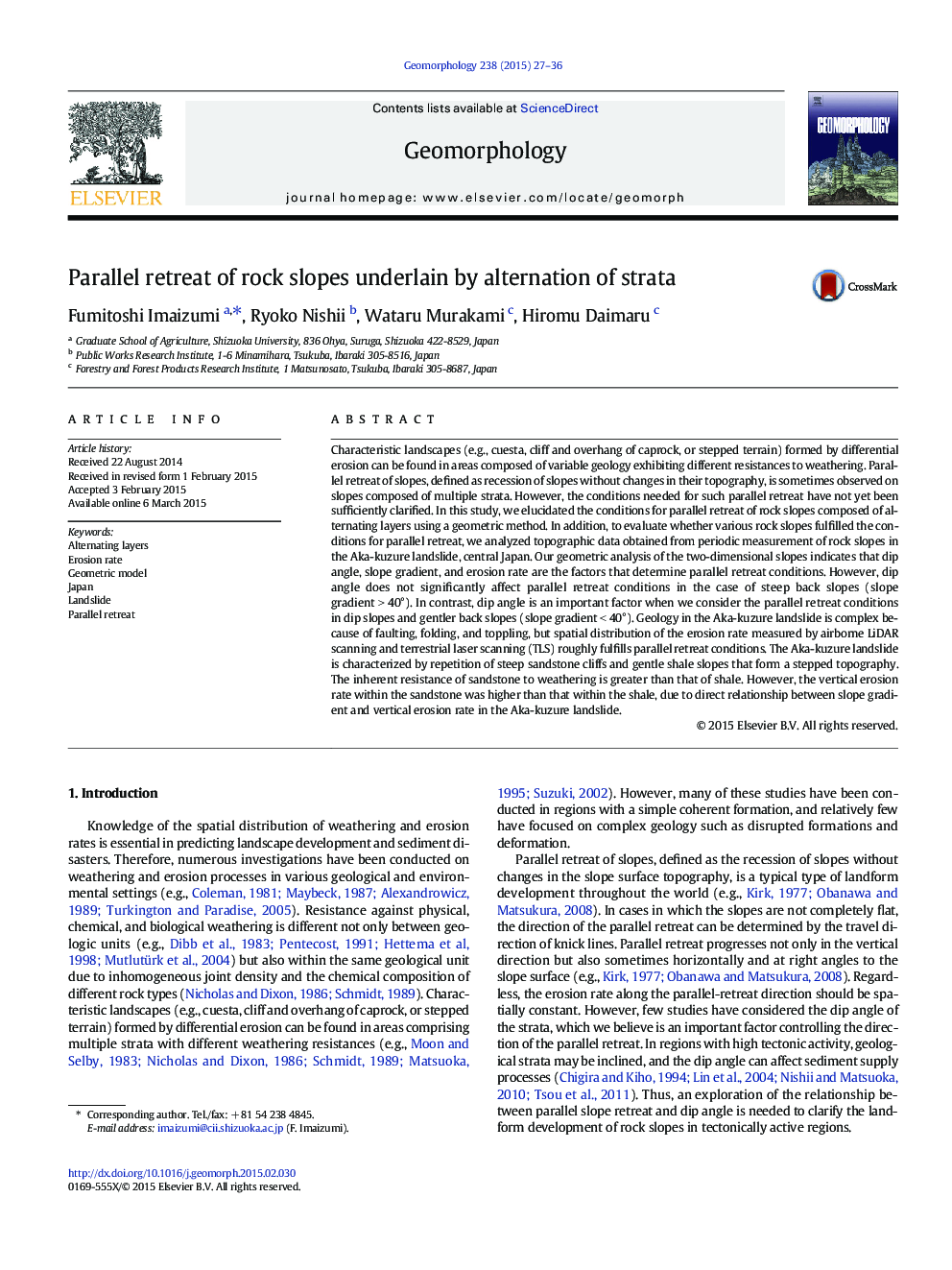| Article ID | Journal | Published Year | Pages | File Type |
|---|---|---|---|---|
| 4684297 | Geomorphology | 2015 | 10 Pages |
•We explained conditions for parallel retreat of slopes comprising alternating layers.•Dip angle, slope gradient, and erosion rate determine parallel retreat conditions.•Erosion rate in the Aka-kuzure landslide fulfilled the parallel retreat conditions.
Characteristic landscapes (e.g., cuesta, cliff and overhang of caprock, or stepped terrain) formed by differential erosion can be found in areas composed of variable geology exhibiting different resistances to weathering. Parallel retreat of slopes, defined as recession of slopes without changes in their topography, is sometimes observed on slopes composed of multiple strata. However, the conditions needed for such parallel retreat have not yet been sufficiently clarified. In this study, we elucidated the conditions for parallel retreat of rock slopes composed of alternating layers using a geometric method. In addition, to evaluate whether various rock slopes fulfilled the conditions for parallel retreat, we analyzed topographic data obtained from periodic measurement of rock slopes in the Aka-kuzure landslide, central Japan. Our geometric analysis of the two-dimensional slopes indicates that dip angle, slope gradient, and erosion rate are the factors that determine parallel retreat conditions. However, dip angle does not significantly affect parallel retreat conditions in the case of steep back slopes (slope gradient > 40°). In contrast, dip angle is an important factor when we consider the parallel retreat conditions in dip slopes and gentler back slopes (slope gradient < 40°). Geology in the Aka-kuzure landslide is complex because of faulting, folding, and toppling, but spatial distribution of the erosion rate measured by airborne LiDAR scanning and terrestrial laser scanning (TLS) roughly fulfills parallel retreat conditions. The Aka-kuzure landslide is characterized by repetition of steep sandstone cliffs and gentle shale slopes that form a stepped topography. The inherent resistance of sandstone to weathering is greater than that of shale. However, the vertical erosion rate within the sandstone was higher than that within the shale, due to direct relationship between slope gradient and vertical erosion rate in the Aka-kuzure landslide.
